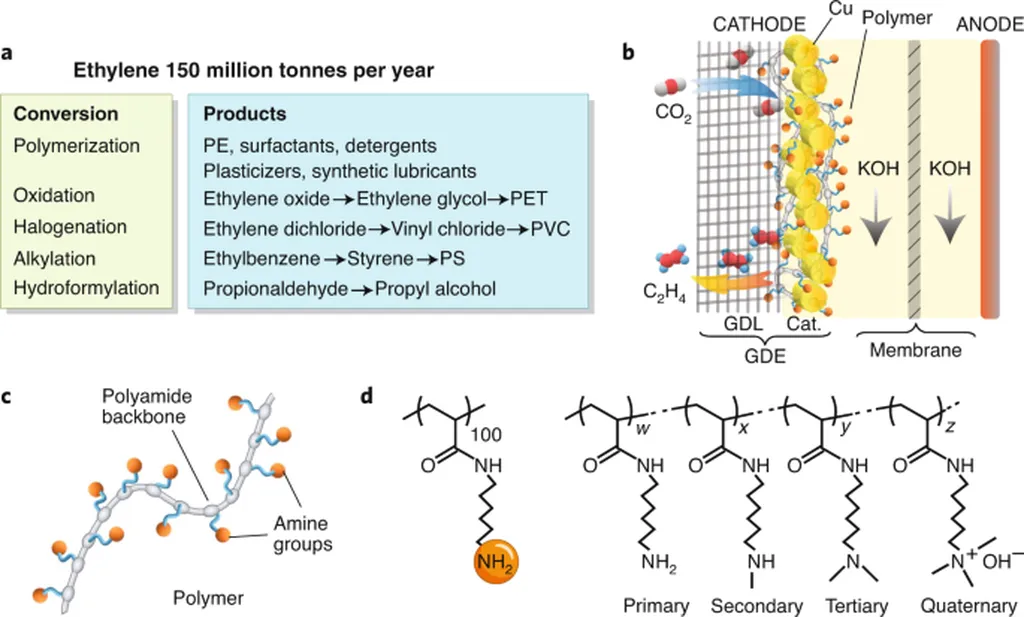In a groundbreaking development that could revolutionize the energy sector, researchers have drawn inspiration from nature to enhance the efficiency of converting carbon dioxide (CO2) into ethylene, a valuable chemical feedstock. The study, led by Silong Dong from the South China Academy of Advanced Optoelectronics at South China Normal University, introduces a novel approach to electrochemical CO2 reduction reactions (CO2RR) that could significantly impact industrial processes and carbon emission reduction efforts.
The research, published in the journal Advanced Science, focuses on the critical role of the gas-water/catalyst triple-phase interface and the microenvironment in CO2RR. By mimicking the structure of Tillandsia leaves, which efficiently capture water and CO2 from the air, the team designed copper nanosheets with dual-functional channels. These channels facilitate the conversion of gaseous water (H2O(g)) into liquid water (H2O(l)) through capillary condensation, ensuring a stable supply of protons, while also enhancing the diffusion of CO2, thus enriching the carbon source.
“This synergistic design creates an optimal microenvironment for CO2 conversion by simultaneously delivering both protons and CO2 to the reaction interface,” explained Dong. The innovative design not only boosts the mass transport of protons and carbon sources but also achieves an impressive Faradaic efficiency (FE) for ethylene of up to 96% at -200 mA cm−2. Moreover, the system exhibits ultra-high stability, operating continuously for over 170 hours in a membrane electrode assembly (MEA) system.
The implications of this research are profound for the energy and chemical industries. Ethylene, a key component in the production of plastics, solvents, and other chemicals, is traditionally derived from fossil fuels. The ability to produce ethylene from CO2 not only reduces reliance on finite resources but also offers a sustainable pathway to mitigate carbon emissions. The enhanced efficiency and stability of the CO2RR process could make it a viable alternative for industrial-scale applications.
“Our strategy provides a construction methodology of H2O and CO2 channels for improving the selectivity and stability of electrochemical CO2 upgrades,” Dong added. This breakthrough could pave the way for future developments in carbon capture and utilization technologies, contributing to a more sustainable and circular economy.
The study’s findings were further validated through advanced analytical techniques such as time-of-flight secondary-ion mass spectroscopy (TOF-SIMS), X-ray absorption spectroscopy (XAS), and multiphysics simulations. These methods revealed the designed H2O and CO2 channels in the microenvironment, confirming their role in boosting mass transports and overall reaction efficiency.
As the world grapples with the challenges of climate change and the need for sustainable energy solutions, this research offers a promising avenue for reducing carbon emissions and enhancing the efficiency of chemical production processes. The work by Dong and his team not only advances our understanding of electrochemical CO2 reduction but also sets the stage for future innovations in the field. With the potential to transform industrial practices, this research underscores the importance of interdisciplinary approaches and the power of nature-inspired designs in addressing global energy challenges.

